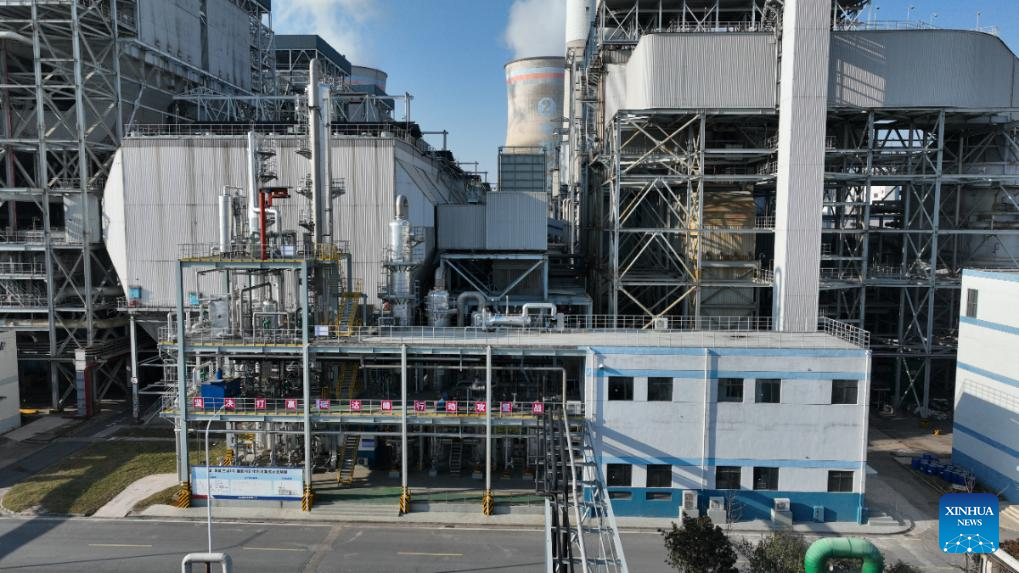
The undated file photo shows the CO2 capture zone of a pilot project for CO2 capture and utilization, affiliated with Zhejiang Provincial Energy Group Company (Zhejiang Energy), in Lanxi County, east China's Zhejiang Province. (Zhejiang Energy/Handout via Xinhua)
HANGZHOU, April 8 (Xinhua) -- To achieve China's dual carbon goals of peaking carbon emissions by 2030 and achieving carbon neutrality by 2060, Chinese energy enterprises use carbon capture, utilization, and storage (CCUS) technology to reduce emissions.
In east China's Zhejiang Province, a pilot project that can store CO2 in bricks has recently passed the 72-hour running test. It is one of the country's leading projects using CCUS technology to capture and utilize CO2 emitted from coal-fired power plants.
The project was built at a power plant in Lanxi County that was affiliated with Zhejiang Provincial Energy Group Company (Zhejiang Energy). Its technology team consists of researchers from the company and institutions such as Zhejiang University and Baima Lake Laboratory.
According to Zhejiang Energy, the project is designed to capture 15,000 tonnes of CO2 per year, equivalent to the total CO2 absorbed by 10 square kilometers of forest every year. During the running test, its average carbon capture rate reached 90 percent, with a capture purity of 99 percent.
The project adopts a two-phase absorbent with low energy consumption to capture CO2, and the regeneration energy consumption of such absorbent is less than 2.4 gigajoule per tonne, reaching the advanced level globally.
The captured CO2 is then used to produce industrial products with wide applications. About two-thirds of the captured CO2 is used to produce aerated bricks, which are lightweight, insulating, and durable building materials. Another one-third is the raw material used to produce food-grade dry ice for cold-chain transportation of food and medicine.
According to researchers of the project, CO2 can react with brick materials to form stable solid compounds under certain conditions, thus achieving permanent storage of CO2 in the construction material.
"Just like making steamed bread with water vapor, we replace the water vapor with CO2 to treat the bricks through a series of chemical reactions. The CO2 can be sealed into the bricks permanently," said Chen Yaoji, director of a research institute under Zhejiang Energy.
The CO2 treatment and storage technology reduces the proportion of quicklime and cement in the production process, thus cutting the cost. According to preliminary estimates, the total production cost is reduced by 2 to 5 yuan (about 28 to 70 U.S. cents) per cubic meter compared with ordinary aerated bricks.
The green and low-carbon transformation in coal-fired power plants is an important support for peaking carbon emissions and achieving carbon neutrality, said Liu Shenghui, chairman of Zhejiang Energy. ■



